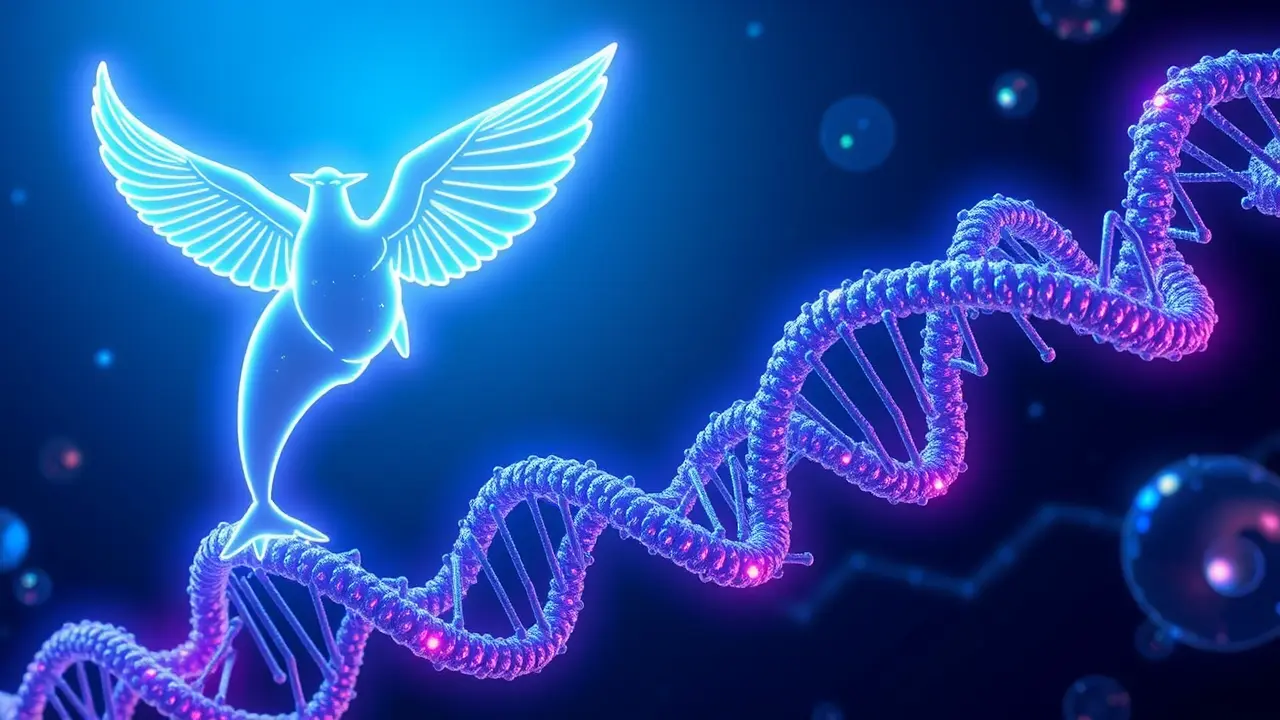AI Finds Protein Links in Convergent Evolution
In a breakthrough that feels like something straight out of a sci-fi novel, Chinese researchers have just turbocharged our understanding of evolution's greatest magic trick. They've deployed artificial intelligence as a kind of molecular detective, programming it to scan the deep architecture of proteins and uncover hidden shared features among species that have independently evolved similar functions—a phenomenon known as convergent evolution.Think about the sheer improbability of it: a bat, a mammal navigating the night sky, and a dolphin, a marine mammal exploring the ocean depths, both developing the complex biological sonar of echolocation from entirely different evolutionary starting points. Or consider the flight of a bird, engineered from bone and feather, versus that of an insect, a marvel of exoskeleton and chitinous wing—completely distinct blueprints arriving at the same breathtaking function.This repeated emergence of identical traits in unrelated lineages has long been a cornerstone of evolutionary biology, a tantalizing clue that nature's design playbook has some universal rules we're only beginning to decipher. The real genius of this new AI-driven approach is its ability to move beyond superficial anatomical similarities and dive into the foundational code of life itself, the proteins.Proteins are the workhorses of the cell, and their specific three-dimensional structures, dictated by sequences of amino acids, determine their function. Until now, identifying the common molecular threads in convergent evolution was like finding a needle in a haystack; the proteins in a bat's ear and a dolphin's melon might perform the same ultimate task, but their sequences could appear wildly different to the human eye.The AI, likely trained on vast datasets of known protein structures and functions, acts as a pattern-recognition engine on steroids. It doesn't get distracted by the noise; it identifies the subtle, non-obvious patterns in folding, in electrostatic charges, or in key catalytic sites that are essential for the function, even if the surrounding genetic 'scaffolding' is unique.This is the equivalent of discovering that two engineers, one in Japan and one in Germany, unknowingly designed cars with an identical, patented combustion chamber design, despite the rest of the engines being completely different. The implications of this are staggering for the future of synthetic biology and medicine.If we can definitively identify the core protein 'logic' required for a function like toxin resistance, extreme temperature tolerance, or even regeneration, we are no longer merely observers of nature but active participants. We can begin to reverse-engineer these principles to design novel proteins from scratch, a field known as de novo protein design.Imagine engineering crops with built-in drought resistance by incorporating the convergent protein motifs found in desert plants and certain resilient bacteria. Or designing new therapeutic enzymes that can break down plastic waste by learning from the convergent evolution of digestive enzymes in wax worms and certain strains of bacteria.This research fundamentally blurs the line between biological discovery and computational creation, positioning AI not just as an analytical tool but as a collaborative partner in the grand project of understanding life's operating system. The repeated emergence of the same functional trait provides a natural laboratory for testing these AI models; it's a controlled experiment run by evolution itself over millions of years.Every instance of convergence is a data point confirming which molecular solutions are not just possible, but robust and repeatable. As these models become more sophisticated, we are peering into the very constraints and possibilities of the protein universe, learning the rules that govern how form follows function at the most fundamental level. This isn't just about classifying life; it's about unlocking a new, predictive science of biology where we can anticipate evolutionary pathways and perhaps even guide them, heralding a new chapter in bio-engineering that is as profound as the discovery of the DNA double helix itself.
It’s quiet here...Start the conversation by leaving the first comment.
© 2025 Outpoll Service LTD. All rights reserved.
